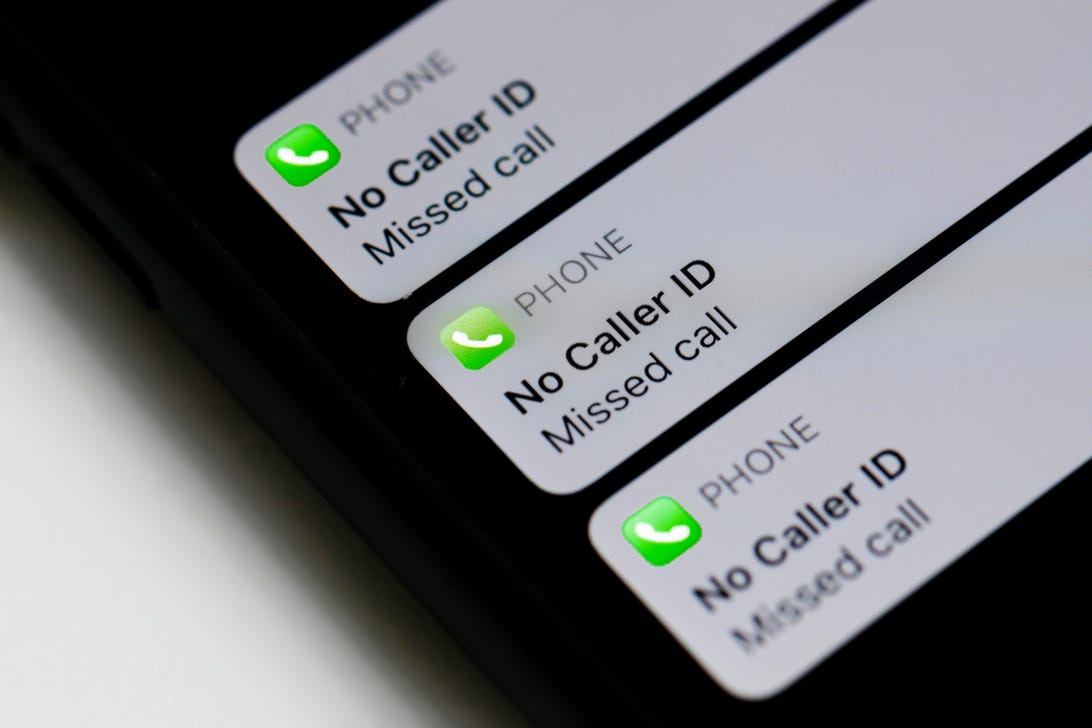Robocalls are out of control. But that could change after June 30

Millions of Americans don’t even bother answering calls from unfamiliar or blocked numbers for fear a call might be from an illegal robocaller. That could change with a June 30 deadline from the FCC that requires voice providers to implement technology to force callers to identify themselves.
Thomas Trutschel/Getty Images
A big deadline in the fight to beat back those annoying robocalls is coming June 30. As of that date, every major voice provider in the US, including phone companies AT&T, Verizon and T-Mobile and cable provider Comcast, will have to implement a technology called Stir/Shaken.
That’s good news for everyone whose phone has been jangling with bogus phone calls involving health-related scams, expiring car warranties and fake banks offering nonexistent interest-rate discounts for credit cards. For years, the scourge of illegal robocalls has plagued the public. It’s the No. 1 consumer complaint and a top priority at the Federal Communications Commission.
US consumers have received just under 22 billion robocalls in the first five months of the year, on pace to hit over 52 billion robocalls for the year, according to YouMail, a company specializing in blocking robocalls.
Robocalls use automated dialers and recorded messages. To be fair, not all robocalls are bad or annoying. Some businesses and public entities use robocalls to communicate important information. For example, your pharmacy may use an automated recording to tell you your prescription is ready to be picked up, or your kids’ school may be alerting you to a snow day. These are legitimate robocalls, and they require that consumers sign up to receive them.
Then there are the illegal robocallers. Because robocalls are cheap to make, they’ve been exploited by scammers all over the world, who use them to defraud billions of dollars from Americans every year. The problem has gotten so bad that many of us don’t answer the phone when it rings, especially if it’s an unfamiliar number on the caller ID. All too often, scammers disguise their phone numbers to trick people into answering.
An end to these annoying and costly calls could be on the horizon thanks to the implementation of Stir/Shaken, which will require voice providers to verify where calls are coming from. That’s where the FCC’s June 30 deadline comes in. To help you get a handle on that and other efforts to stamp out robocalls, CNET has put together this FAQ.
What’s Stir/Shaken?
“Stir” stands for “secure telephone identity revisited,” and “Shaken” for “signature-based handling of asserted information using tokens.” Stir is the technical protocol, and Shaken is the framework by which calls can be tracked in the new robocall mitigation database.
The way it works is that Stir/Shaken technology ensures that calls traveling through phone networks have their caller ID “signed” as legitimate by originating carriers and validated by other carriers before the calls reach you. In short, the technology authenticates a phone call’s origin and makes certain the information on the Caller ID matches.
What’s ‘caller ID spoofing’?
Spoofing is when callers disguise their identity by deliberately falsifying the information transmitted to your caller ID display. Scammers do this to make calls less easily traceable. Also, by using so-called neighbor spoofing, which makes it appear as though the number is a local one you may already know or trust, scammers try to trick you into picking up a call.
Is spoofing illegal?
Under the Truth in Caller ID Act, the FCC’s rules prohibit any person or entity from transmitting misleading or inaccurate caller ID information with the intent to defraud, cause harm, or wrongly obtain anything of value. Spoofing isn’t illegal if there’s no intent to cause harm.
Illegal spoofers can face fines of up to $10,000 per violation of the law.
Spoofing that’s intended to hide identity can be permitted under certain circumstances. For example, law enforcement agencies working on cases, victims of domestic violence, or doctors wishing to discuss private medical matters may all be exempt from these rules.
What’s the Traced Act? How will that stop robocalls?
The Traced (Telephone Robocall Abuse Criminal Enforcement and Deterrence) Act, was signed into law in December 2019 by President Donald Trump. It basically makes compliance with the Stir/Shaken technology mandatory for all voice service providers.
The law directed the FCC to come up with rules to require voice providers to implement the technology within 18 months.
What’s the June 30 deadline about?
The FCC has set a deadline of June 30 for companies that provide phone service to implement Stir/Shaken, the call verification system that’ll make it harder for scammers to hide their numbers. Phone companies will also have to publish robocall prevention strategies in a public database.
The program was created in late 2019 by the Traced Act. The FCC released the standards in March 2020, and it set a deadline for service providers to comply by the end of June 2021.
Major phone companies, such as AT&T, Verizon and T-Mobile, as well as cable provider Comcast, have said they’re implementing Stir/Shaken. Multiple carriers asked for an extension, but the FCC denied those petitions in March.
Does this mean we’ll see a huge drop in robocalls come July 1?
That’s the hope. But sadly, it probably won’t be the reality. For one thing, some carriers have already been implementing Stir/Shaken. So the deadline won’t necessarily mark a hard switchover for most phone companies. It’s a technology and framework they’ve been implementing and deploying for a while.
The second reason is that scammers are always coming up with new ways to make illegal robocalls. The sad truth is that making these calls is cheap and scamming people is lucrative.
“It ends up being a game of whack-a-mole,” FCC Commissioner Brendan Carr said in an interview with CNET in May. “So the long-term solution is still difficult. We’ll see how much progress we can make.”
Will all carriers be required to hit this deadline?
Previously, the FCC had given small providers, those with fewer than 100,000 subscribers, until June 30, 2023, to implement Stir/Shaken. The extension would allow smaller providers to evaluate the implementation costs and plan deployment. But the FCC said in April that there’s evidence a large volume of illegal robocalls are coming from a subset of smaller providers, so the agency has proposed bumping up the deadline for these carriers by a full year.
What’s the government been doing to stop illegal robocalls?
The Department of Justice, the Federal Trade Commission and the FCC have worked together to combat robocalls. In March 2020, the DOJ won an injunction against two internet telephone providers that allegedly transmitted hundreds of millions of calls to consumers.
What about the FCC?
The agency has stepped up its enforcement, sending cease-and-desist letters to carriers that facilitate scam calls and imposing fines on illegal robocallers. In one case, the FCC fined Texas telemarketers $225 million for spoofing roughly 1 billion robocalls.
Though the June 30 date is the deadline for carriers to implement Stir/Shaken, many carriers have already started using the technology. As these carriers have gotten Stir/Shaken working, it’s gotten easier for the FCC to track down carriers that illegally transmit calls. And it could potentially get even easier as all carriers meet the deadline for implementation.
“We need to use every tool we have to get these junk calls off of our networks,” acting FCC Chair Jessica Rosenworcel said in a statement in May. “From these new cease-and-desist letters to STIR/SHAKEN implementation to large fines and our robocall mitigation database, we are going to do everything we can to protect consumers from these nuisance calls,” Rosenworcel said. “We’re not going to stop until we get robocallers, spoofers, and scammers off the line.”
Carr noted in an interview with CNET in May that there isn’t a silver bullet for stopping these calls. Multiple technologies and policies are needed to address this issue, he said.
“I think combined that’s what’s going to break the back of these robocallers,” Carr said. “If it doesn’t, then we’ve got to continue to innovate and find more technologies that are going to stop this, because certainly the bad actors that are out there have a profit motive to find a way around these systems.”
Is there any more movement in Congress to get tougher?
Earlier this month, Senate Majority Leader Chuck Schumer and Sen. Kirsten Gillibrand, both Democrats from New York, introduced the Deter Obnoxious, Nefarious, and Outrageous Telephone (Do Not) Call Act to increase penalties for individuals and companies intentionally preying on consumers through unsolicited and illegal robocalls.
The bill would:
- Clarify violations under the Telephone Consumer Protection Act, which outlaws robocalls.
- Allow prison terms of up to one year for willfully and knowingly violating the TCPA.
- Allow prison terms of up to three years for aggravated violations of the TCPA.
- Double the maximum penalties under the TCPA for falsifying caller ID, from $10,000 to $20,000.
“Americans are desperate to ‘hang up the phone’ and the DO NOT Call Act is the antidote we
need to cut the cord on ‘spoofing’ scams that target especially elderly New Yorkers,” Schumer said in a statement.
Gillibrand added, “This vital piece of legislation will give the FCC the tools needed to combat scammers who grossly violate the Telephone Consumer Protection Act and, all too often, target and defraud senior Americans.”









